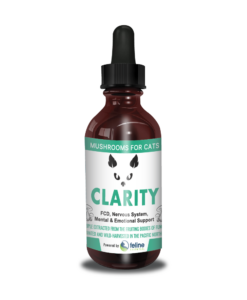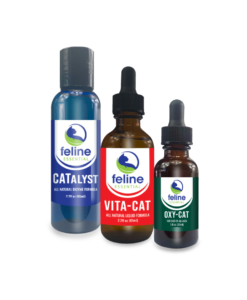We know from experience that it can seem daunting to help a fat cat. We know their health is compromised and their lives are shortened by every extra pound they lug around. The same is true for us humans. And just as with us humans, obesity is an epidemic for our kitties. More than 60% of domesticated cats are obese.
While genetics play a role in everything, obesity is often causes by too much food and too little activity. The game-plan to help a fat cat needs to include evaluating diet and providing exercise.
As obligate carnivores, cats need a high protein, moisture rich diet. This means a good quality wet, gently cooked, or balanced raw food diet. Even the ‘best’ dry foods on the market contain more than 30% of carbohydrates. In a cat’s species appropriate diet, the carb content is about 2%. To find out how many carbs are in the food you feed (because manufacturers don’t include carbs on their nutritional panel), check out the carb calculator.
In addition to feeding a quality diet, it’s important to make sure we’re not over-feeding our fat cats. Ask your veterinarian what your cat’s ideal weight is – and start counting calories to better control their daily intake to reach their goal weight.
It can be difficult for indoor kitties to stay active. Providing vertical space, shelves to climb, supervised outdoor time, and engaged playtime on a regular routine will help a fat cat physically and mentally.
And here’s one more thing that can help a fat cat…
Let’s address big butts. It’s a physical impossibility for many fat cats to reach their own rear ends. Because of this, I do a daily check to make sure no matting is starting back there. Depending on the type of litter you use, you may also find a litter ball hanging on. And because our big boy can’t quite get around to bath his bum, I’ll even give his little button a gentle bath to make sure he doesn’t develop an irritating case of itchy butt.
Healthy Digestive Product for Your Cat




Recent Comments